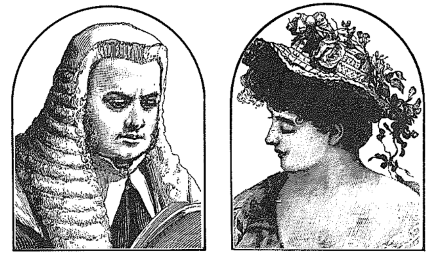Screen
Zoology
Greystoke: The Legend of Tarzan, Lord of the Apes; Directed by Hugh Hudson; Screenplay by P. H. Vazak and Michael Austin, based on Tarzan of the Apes by Edgar Rice Buroughs; Warner Brothers.
Greystoke raises a large number of questions, most of which will not be addressed here. For example, there’s the question of cinematic fidelity to the movie creation portrayed by Johnny Weissmuller from 1932 to 1948. Suffice it to say that no one can play that Tarzan any better than Weissmuller, just as no one can hold a match to Basil Rathbone’s Holmes. With the matter of why the new Tarzan doesn’t let out a long “aaahhh!” out of the way, one could move to the question of fidelity to the creation of Edgar Rice Burroughs. Anyone who wants to sort that one out can consult the 24 original texts or the biography Tarzan Alive by Philip José Farmer (Doubleday; New York; 1972). Greater interest should be centered on what the present film says, for it must be assumed that the director of Chariots of Fire didn’t undertake this project simply in order to increase his cash flow; perhaps incorrectly. I assume that there was a higher motive involved, an assumption based, by and large, on a feeling that compels me to think that a man who made so thoughtful a film as Chariots wouldn’t drop his sights and focus on a B-movie.
The bare bones of the plot are these. A proper, civilized English couple, Lord and Lady Greystoke, were shipwrecked on the west coast of Africa in 1888. Alice Clayton gave birth to a son, John Clayton III; she died while the boy was still an infant, age one. John Clayton II, the day of his wife’s death, was killed by a “great ape.” A female ape that had just lost her child saved the infant Clayton and reared him. The boy became known as Tarzan, or White Skin. Eventually, he was brought to England where he inherited an estate. Unable to adapt to the Edwardian world (which was still very Victorian when he was there), Tarzan returned to Africa. Finis.
Subelements dot the way in the film. For example, rifle-toting and fast-shooting British gentlemen explorers are shown blasting their way through the jungle. By the time they arrive on the scene, the viewer is conditioned to identify with the apes, so when an ape is shot, it is supposed to be like watching a defenseless, slow, woman being senselessly murdered by a juvenile delinquent. The pathetic fallacy has a hard time in the face of the film. The upper-crust Brits are shown to be wholly affected, yet underneath the varnish no better than the dregs of society that have been exiled to a post where they thrive like grub-like creatures in the fetid atmosphere of slimy, smoky hostel at the edge of the jungle. Civilized man, Darwin notwithstanding, seems to have advanced very little — if at all. The final blow to both the viewer and to Greystoke/Tarzan comes when the latter, who has just saved his ape “father” from vivisection in a London museum, witnesses the shooting of the ape by a militia man, who just happened to be handy. Certainly, any of these pieces would be enough to make one turn a proverbial tail and to head back to the hills.
It might seem that Hudson and screenwriters Vazak and Austin are pushing the “Noble Savage” line here, maintaining that the state of nature is good and society bad. Given the sense of most of the events in Grestoke, a plausible and strong argument can be made that this is so. However, pretty though the jungle may be, things aren’t always shown to be totally hunky-dory when it comes to Mother Nature; Queen Victoria (figuratively speaking) isn’t the only one who takes it on the chin. For example: the Greystokes are shipwrecked by a storm, and while they survived, the landing site is littered with corpses; Alice Clayton died from a fever, not an over-tight corset; John Clayton, wo was peaceably minding his own business, was killed by a marauding ape who had an attitude problem (a teenaged Tarzan, using a man-made knife, eventually had to take care of the beast); a jungle cat tears apart one of Tarzan’s playmates — and so on. Nature isn’t something devised and maintained like Disney World. Moreover, those people who think that the fresh, rudimentarily, witty, and affectionate Tarzan is a paragon of humanity might simply ask themselves if they’d like to have one of his ilk marry into their family.
Hudson’s work is more blurred and indistinct than a cut-and-dried “four legs good, two legs bad.” There is a pervasive indication throughout Greystoke that a synthesis should be reached. That is, civilized man cut off from nature is a crippled self-creation; nature in the raw is not conducive to the health and well being of man, for if everything were beautiful, then the struggles and travails that are a part of the rise to civilization simply wouldn’t have been endured and undertaken. The wholly natural man is a savage; his opposite number is a robot. Either is less than human. Man does not thrive in the jungle (tropical or urban), nor can he long survive in a sterilized, rootless condition like some mobile organic computer. Finding the point of synthesis is a primary duty of our species. cc

Leave a Reply